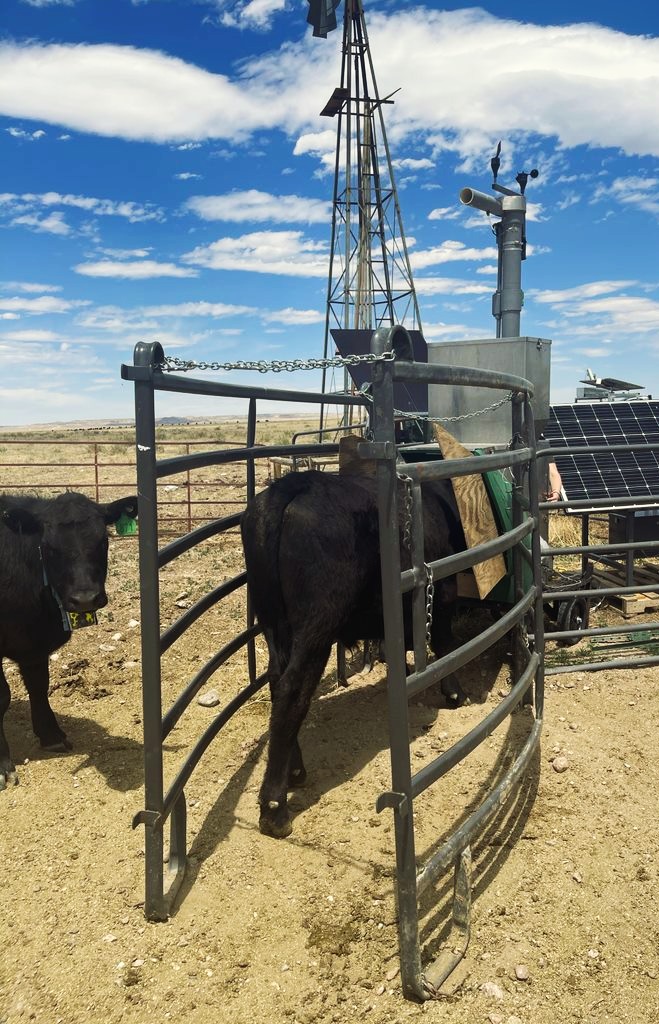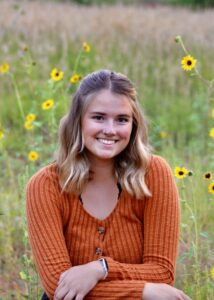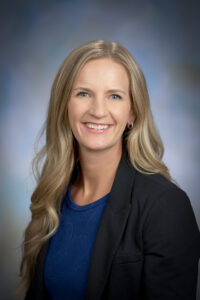Introduction
CSU AgNext and USDA Agricultural Research Services (USDA-ARS) have recently partnered to conduct a new research study that measures the impact of genetics and grazing management on methane emissions and performance in cattle. Graduate student, Ashley Schilling, is leading this project under Dr. Kim Stackhouse-Lawson with partnership from Dr. Justin Derner from USDA-ARS.
By conducting this study, we are researching how enteric methane emissions vary between animals of different origins. The official research question is as follows: “Do grazing management and genetics/origin impact methane emissions?”
Methane is a greenhouse gas that is emitted from ruminant livestock animals. CH4 emissions contribute to the trend of global warming, rendering the industry-wide search for sustainable solutions for CH4 mitigation within the agricultural industry.
Research Process
To study cattle that come from differing origins, the research team is using cattle from multiple locations across the United States. “We have two different productivity pastures; we have a low-productivity pasture and a high-productivity pasture. Some of the cattle in each pasture will come from USDA Meat Animal Research Center (MARC) in Clay Center, Nebraska, and then the remaining cattle come from the Crow Valley Livestock Cooperative, which is a cooperative of 40 producers based in Nunn, Colorado.” Schilling said.

AgNext has partnered with USDA and the Crow Valley Livestock Cooperative to perform grazing research, which is important not only given the pressure for this research, but this is also a project that exists at the intersection of government, academia, and industry.
“Our main goal is to see the impact of the origin, or genetics, of these cattle and the productivity of the pastures and how we’re managing these cattle on the pasture to see if that impacts the methane emissions and performance. If it does, then the AgNext role on this project is to monitor methane emissions,” graduate student Ashley Schilling said.
USDA’s role in this study includes the intake of data involving tracking cattle movement and weights, as well as tracking forage data. “USDA is looking at forage quality in the pastures; they’re using satellites to look at weekly standing biomass. Two to four head of cattle in each pasture have radio collars on to monitor their movement. USDA is getting live weights using RFID tags and walk-across scales. So, there’s a lot of technology on these projects, including on both pastures,” Schilling said.
Schilling described AgNext’s daily roles in the project: “The AgNext research team is measuring methane, carbon dioxide, and oxygen using a Greenfeed, which is an automated head chamber system made by C-Lock, Inc.” To learn more about AgNext’s use of C-Lock’s Greenfeed machine, check out our blog post here.
“Using the GreenFeed automated head chamber systems, which will measure individual animal CH4, we will measure emissions from the steers from both pastures. Steers will be individually weighed at the beginning and end of the grazing season and at 28-day increments,” according to Schilling.

Project Logistics
The study is taking place in Nunn, Colorado, allowing our team at AgNext to be actively involved in the measurement processes. “We’re at the Central Plains Experiment Range. Dr. Justin Derner and the USDA team are stationed out there and they take care of and maintain the cattle every single day. I go out weekly to check the GreenFeed, and I monitor the Greenfeed daily via the app,” Schilling said.
USDA has been managing the land at the Central Plains Experiment Range since 1930. This project serves as a chance for AgNext to look at grasslands with a variety of management practices. AgNext was added to this pre-existing USDA project in order to provide a way to incorporate methane measurement techniques into the data analysis. “USDA is running the day-to-day operations and care of the project and cattle, and then AgNext is stepping in to measure methane because we have the capability to do that,” Schilling said.
Schilling explained the goals and timeline for this research, stating that the research team is preparing for a multi-year project. “This year will serve as year zero, as we’re figuring out the project logistics of how this project will work,” Schilling said. “Then, we’ll have one in a year or two in the summer of 2023 and 2024. Following the completion of trials in years one and two, AgNext and USDA plan to submit for publication to share research findings.”
USDA, AgNext, and Industry Partnership
This project includes a robust outreach plan to connect industry to the university. The role of stakeholders and local producers in this study is vital to integrating our findings into public practice. “We expect genetic differences to influence individual animal enteric emissions and this outcome can be incorporated into selection efforts to mitigate CH4 emissions,” Schilling said.
The differential factor in this study is the partnership between local producers and both AgNext and USDA. “We’re also going to host some producer field days, where we hope to highlight the producers that are involved because it’s pretty significant to have 40 producers in a cooperative working with the University and USDA,” Schilling said.
Aside from the primary research goal, AgNext and USDA have additional objectives for relaying found data to the industry stakeholders and producers. AgNext strives to create an environment in which producers report changes in knowledge, attitudes, skills, and/or awareness as a result of their participation in the educational programming provided by this project.
We aim to incorporate these ideologies into this research study by communicating our findings directly to producers and stakeholders in a manner that is supportive and beneficial to future practices, while also involving USDA to strengthen the connection with those who are involved in all levels of the agricultural industry.
Grant Details
We are excited to announce that Ashley Schilling of AgNext has received a research grant (Project # GW22-232) from WSARE (Western Sustainable Agriculture Research and Education). This funding will be used to support the continued study of the collaborative USDA and AgNext grazing project.
WSARE is a program of the U.S. Department of Agriculture’s National Institute for Food and Agriculture that provides competitive grants and educational materials. The SARE grant programs are conducted cooperatively by farmers, ranchers, researchers, and ag professionals to advance farm and ranch systems that are profitable, environmentally sound, and good for communities.


Rebecca Crook
Undergraduate Communications Intern

Ashley Schilling
Graduate Student

Dr. Kim Stackhouse-Lawson
Director of AgNext
